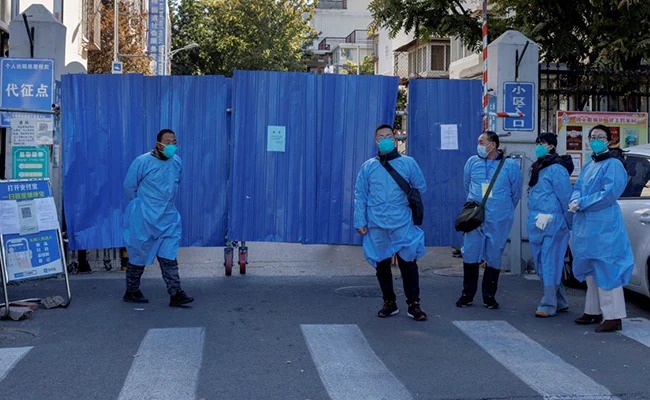| Translate This News In |
|---|
With the number of cases rising in China, is the Chinese government losing control over the COVID-19 management? During the winter, the virus is expected to spread across the nation in at least three waves. It is undeniable that the Chinese government was “under-prepared” when it decided to immediately stop its zero-COVID policy in response to protests across the nation, according to The Hong Kong Post.
Regarding the amount of fatalities, the Chinese government has stayed mute so far. The removal of restrictions earlier this month has led to an upsurge in cases, but the Chinese government has issued a warning about subsequent waves of COVID infections in the coming months.
According to The Hong Kong Post, citing a speech by Wu Zunyou, the head epidemiologist at the Chinese Center for Disease Control and Prevention, “the present outbreak would climax this winter and run in three waves for around three months.” At a press conference in Beijing, Wu Zunyou said those things.
Wu asserts that the “Up until mid-January, the first wave would be in effect. The massive nationwide travel of hundreds of millions of people for the Lunar New Year, which begins on January 21, would most certainly cause a second wave to occur shortly after.”
According to the news source, he projected that China would experience a “third wave” from late February to mid-March as people returned to work from the vacations. The wave is anticipated to be brought on by the large-scale travel leading up to the Lunar New Year holiday, which falls on January 21 and is celebrated by going back to one’s hometown.
Notably, The Hong Kong Post stated citing western media reports that hospital activity in China has slowed down as they deal with the dual issues of running out of beds due to a high patient volume and infected health workers. Due to a rise in demand, pharmacies are currently running low on supplies and have little chance of getting more.
Despite the official tally of COVID-19 instances being roughly 2,000 per day, The Hong Kong Post claimed citing a state media report that many people are reporting numerous cases of the virus nearby. Asymptomatic infections were “difficult” to trace, the national health commission acknowledged last week, and it would no longer be counting them.
In the upcoming months, a million deaths have been anticipated by experts. Experts claim that China is not well-prepared for a sudden exit since there is a lack of resources for increasing older immunisation rates, expanding hospital intensive care units, and storing antiviral drugs.
A statewide reopening might result in up to 684 deaths per million people, according to predictions made by three professors at the University of Hong Kong. With 1.4 billion individuals, it would result in 964,400 deaths in China.
According to a research paper published just last week on the Medrxiv preprint server, the rise of COVID-19 cases will “certainly overrun many local health systems across the country.” The Hong Post newspaper highlighted this statement. Peer review of the research paper has not yet occurred.
According to the report, hospital capacity will expand by 1.5 to 2.5 times in response to the elimination of COVID-19 limits across all provinces. China should provide people with booster vaccinations and antiviral medications to prevent the situation.
According to the study, which was funded in part by the Chinese Center for Disease Control and Prevention (CDC) and the Hong Kong government, the death rate can be reduced by 26% to 35% if the fourth-dose vaccination covers 85% of the population and antiviral coverage reaches 60%.
To stop the spread of COVID-19, Chinese authorities have been enforcing lockdowns, limiting movement, and performing mass testing. But after nationwide protests against the measures were organised, the limits were loosened.
The spread of the virus in rural regions and the availability of sufficient quantities of effective vaccination doses are other issues the government must address. The vaccinations produced in China, according to the news source, have not shown to be as effective as those produced in India or the West. Additionally, mainland China does not have any vaccines created by other countries.


















